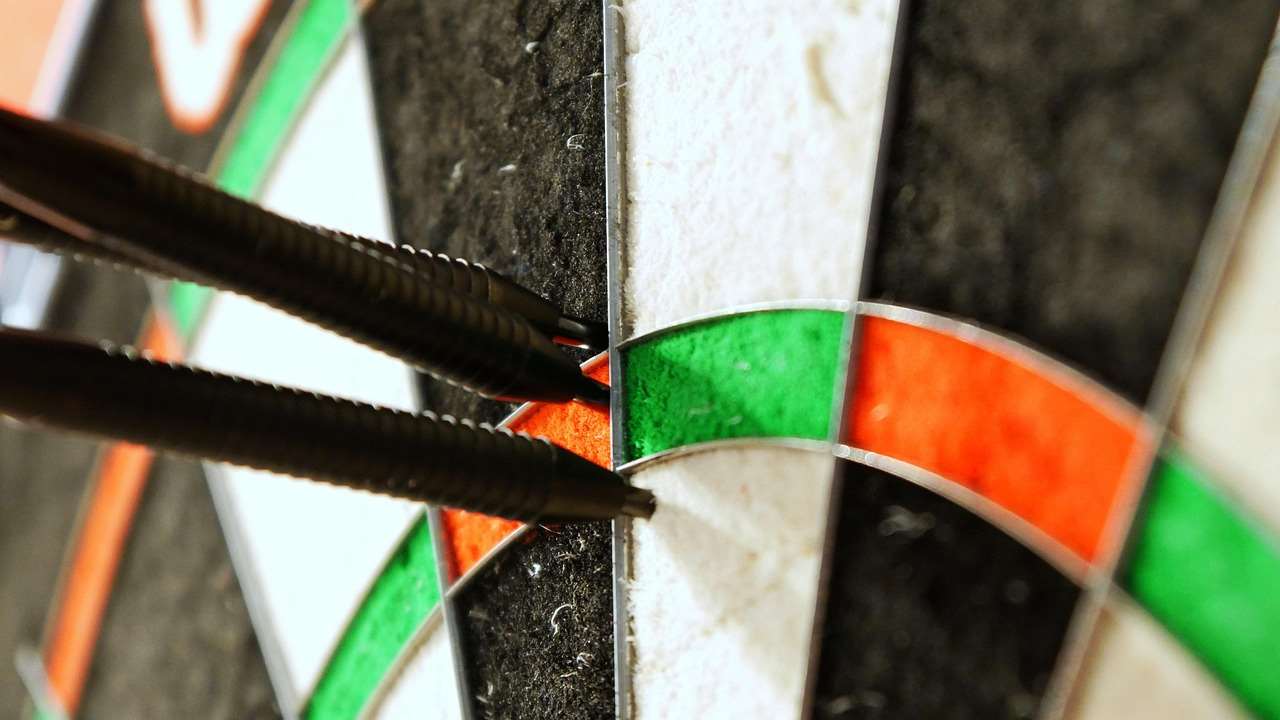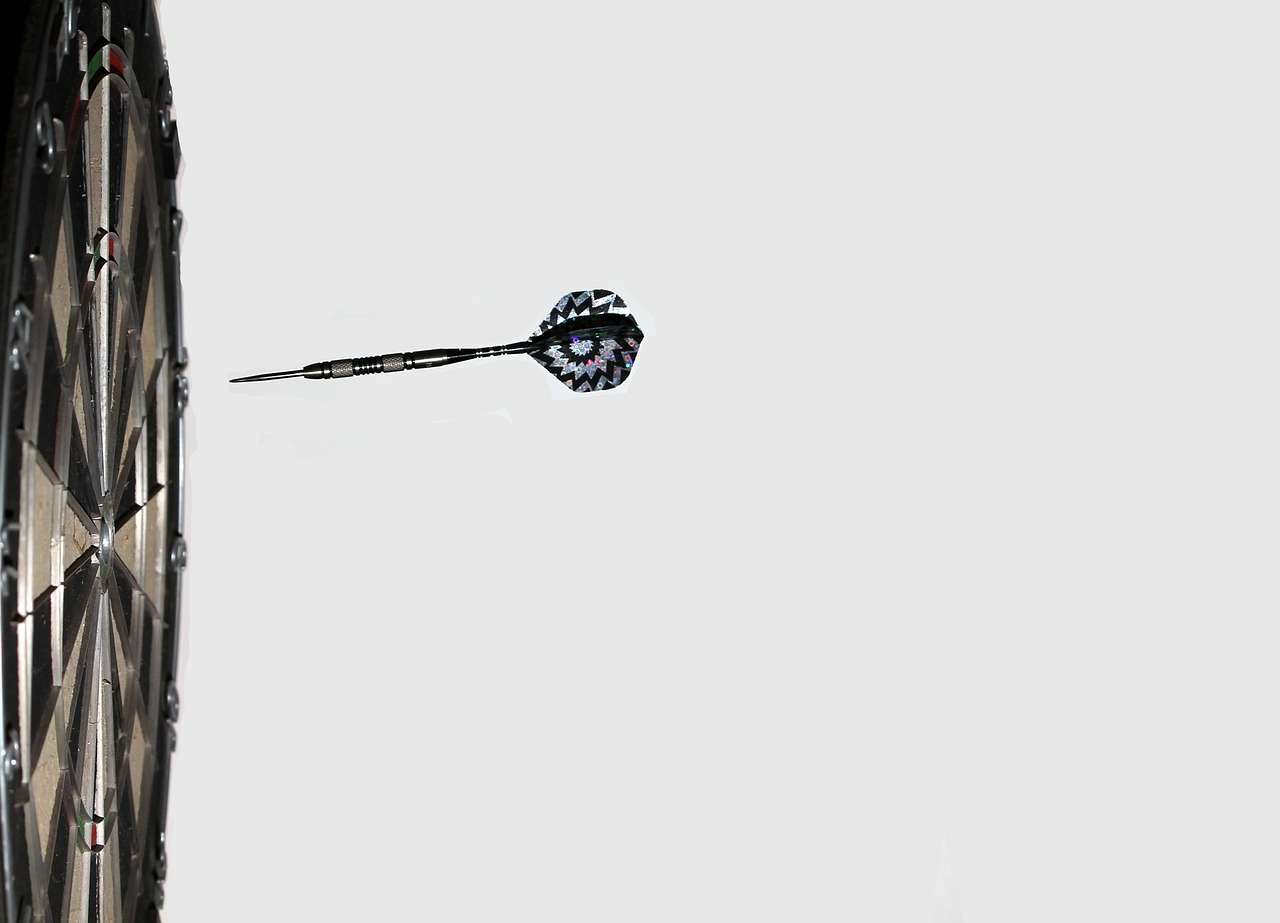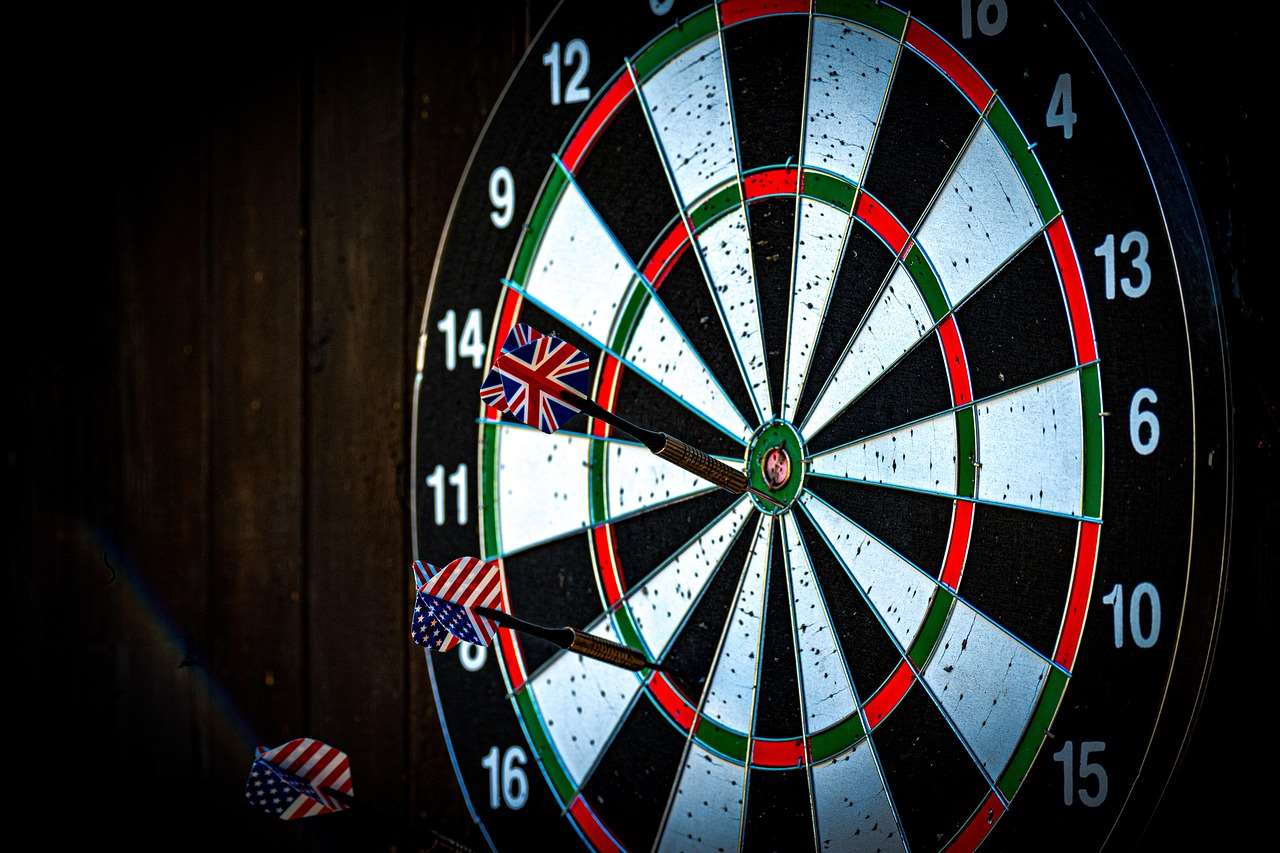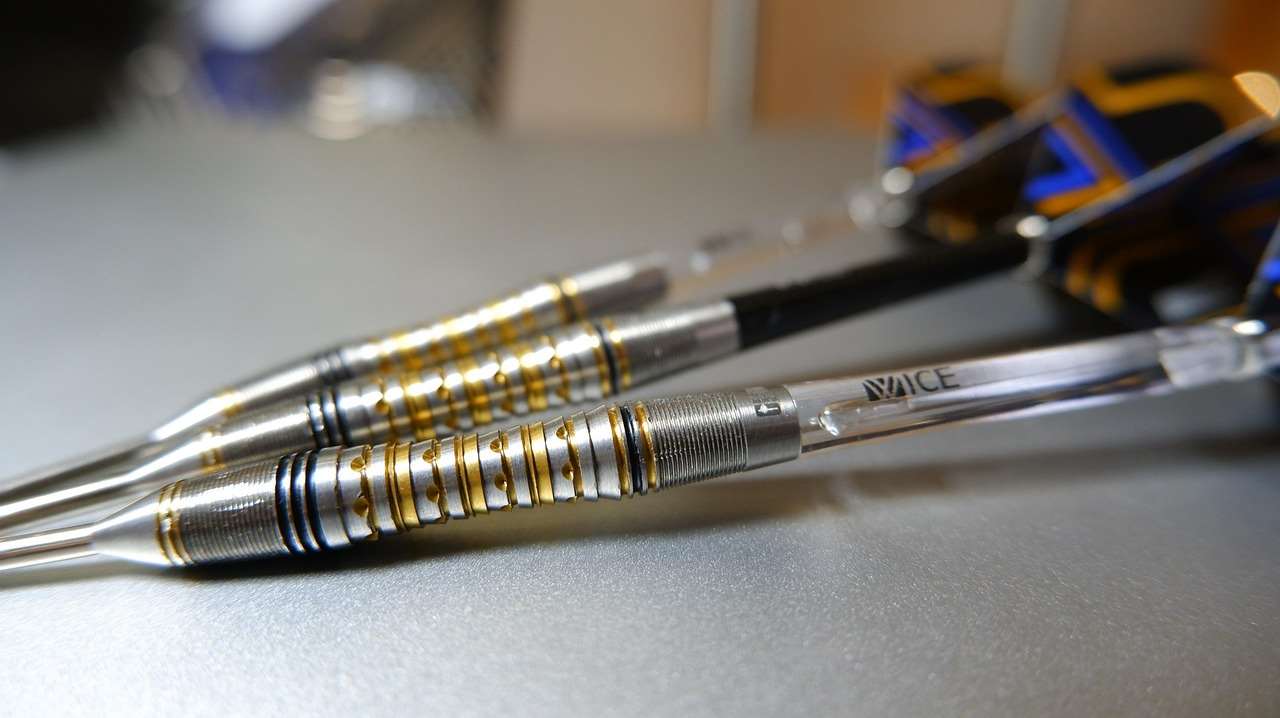Accurate measuring darts oche distance is paramount for fair play and consistent performance in darts; the standard distance is 7 feet 9 1/4 inches (2.37 meters) from the face of the dartboard. This article provides a comprehensive guide to accurately measuring the oche, ensuring your dart setup meets regulations, and enhancing your overall game, exploring the importance of standard dartboard height and other crucial setup considerations.
⚠️ Still Using Pen & Paper (or a Chalkboard)?! ⚠️
Step into the future! The Dart Counter App handles all the scoring, suggests checkouts, and tracks your stats automatically. It's easier than you think!
Try the Smart Dart Counter App FREE!Ready for an upgrade? Click above!
The Importance of Accurate Oche Measurement
The darts oche, also known as the throw line or toe line, is the line behind which a player must stand when throwing darts. Its correct placement is not just a matter of preference; it’s a fundamental aspect of the game that ensures fairness and consistency. Imagine playing a game where one player throws from a shorter distance – it would create an unfair advantage. That’s why accurate measuring darts oche is crucial.
Whether you’re setting up a dartboard at home, in a pub, or for a competitive tournament, adhering to the standard measurements is essential. This ensures that all players are competing under the same conditions, and it allows you to develop a consistent throwing technique that translates across different venues. Furthermore, correctly placed oche lines help prevent foot faults and maintain the integrity of the game. You can find more information on dart games here.

How to Measure the Darts Oche Correctly
Measuring darts oche might seem straightforward, but precision is key. Here’s a step-by-step guide to ensure you get it right:
- Gather your tools: You’ll need a measuring tape (preferably metric, but imperial works too), a pencil or marker, and potentially a level or straight edge.
- Locate the face of the dartboard: This is the vertical plane directly in front of the board. It’s from this point that the oche distance is measured.
- Measure the distance: Extend the measuring tape from the face of the dartboard to the floor. The standard distance is 2.37 meters (7 feet 9 1/4 inches). Mark this point on the floor.
- Draw the oche line: Using a straight edge or level as a guide, draw a line at the marked point. The line should be at least long enough for a player to comfortably stand behind.
- Double-check your measurement: It’s always a good idea to double-check your measurements to ensure accuracy. A slight discrepancy can affect your game over time.
Tools for Precise Oche Measurement
While a standard measuring tape is sufficient, several tools can further enhance the accuracy of your oche measurement:
- Laser Measure: A laser measure provides instant and accurate distance readings, eliminating the potential for human error associated with manual tape measurements.
- Oche Measuring Tool: These specialized tools are designed specifically for measuring darts oche distance. They often feature a pre-set measurement and a built-in level.
- Plumb Bob: A plumb bob can help ensure that your dartboard is perfectly vertical, which is essential for accurate oche measurement.
Dartboard Height: An Equally Important Factor
While measuring darts oche distance is crucial, the height of the dartboard is just as important. The standard height, measured from the floor to the center of the bullseye, is 5 feet 8 inches (1.73 meters). Failing to adhere to this height can negatively impact the game. Incorrect board height, along with improper oche placement, can severely affect your throwing darts how to stand technique.
Always measure the dartboard height after mounting it on the wall. Use a level to ensure the board is perfectly vertical. Adjust the mounting if necessary to achieve the correct height. It’s recommended to use a dartboard surround to protect the wall from stray darts.
Common Mistakes When Measuring the Oche
Even with careful attention, it’s easy to make mistakes when measuring darts oche. Here are some common pitfalls to avoid:
- Measuring from the wall, not the board face: The distance must be measured from the face of the dartboard, not the wall behind it. The thickness of the dartboard matters.
- Inaccurate tape measurement: Ensure the tape is held straight and taut. Sagging or bending can lead to inaccurate measurements.
- Ignoring the dartboard’s verticality: A tilted dartboard will affect the perceived distance to the oche. Ensure the board is perfectly vertical using a level.
- Assuming the floor is level: Uneven floors can throw off your measurements. Use a level to check the floor before measuring darts oche and adjust accordingly.
- Not double-checking: Always double-check your measurements! This simple step can save you from frustration and ensure fair play.
The Impact of Incorrect Oche Measurement on Your Game
An incorrectly measured oche can have a significant impact on your darts game. Throwing from a distance that is too short can lead to a less controlled throw, while throwing from a distance that is too long can cause you to strain your arm and lose accuracy. Developing a consistent throwing motion is key to improving your darts skills, but this becomes challenging if you are constantly adjusting to different oche distances.
Furthermore, playing on a board with an incorrect oche distance can affect your mental game. Knowing that the setup is not standard can create doubt and anxiety, leading to poor performance. Always take the time to measure darts oche before playing, especially in unfamiliar venues. Consider using a Mobile dart scorer to track your progress and identify any inconsistencies in your game related to oche distance.

Setting Up Your Darts Area: Beyond the Oche
Measuring darts oche and setting the dartboard height are essential, but a complete darts setup involves more than just these two elements. Consider these additional factors:
- Lighting: Proper lighting is crucial for visibility. Ensure the dartboard is well-lit, ideally with a dedicated dartboard light fixture.
- Dartboard Surround: A dartboard surround protects your wall from stray darts and reduces noise.
- Floor Protection: A dart mat can protect your floor from damage and provide a comfortable standing surface.
- Space: Ensure you have enough clear space around the dartboard for players to throw without obstruction.
Oche Materials and Construction
The oche itself can be constructed from various materials. Common options include:
- Tape: Simple and inexpensive, but prone to wear and tear.
- Paint: More durable than tape, but requires careful application.
- Wooden Board: A solid and stable option, providing a clear visual marker.
- Raised Oche: A slightly raised platform, providing a tactile cue for the throw line.
The choice of material depends on your budget, aesthetic preferences, and the frequency of use. A raised oche offers several advantages. It provides a clear physical boundary, preventing players from inadvertently stepping over the line. It can also improve consistency by ensuring that players always stand in the same position. Ultimately, the best oche is one that is durable, visible, and comfortable to use.
The Oche in Professional Darts
In professional darts, the rules regarding the oche are strictly enforced. Referees carefully monitor players to ensure they do not step over the line during their throw. Violations can result in penalties, such as the invalidation of the throw. In the professional arena, ensuring accurate measuring darts oche is vital.
The Professional Darts Corporation (PDC) and other governing bodies have specific guidelines for the oche, including its dimensions, material, and placement. These guidelines are designed to ensure fair play and consistency across all tournaments.
Adjusting the Oche for Different Players
While the standard oche distance is 2.37 meters, some players may prefer to adjust it slightly to suit their individual throwing style. This is perfectly acceptable in casual games, but it’s important to agree on the distance before starting the game.
When adjusting the oche, it’s crucial to maintain the correct dartboard height. Changing one without the other can throw off your aiming and reduce your accuracy. Experiment with different oche distances to find what feels most comfortable and natural for you. Keep in mind that even small adjustments can have a significant impact on your game. You may want to research common udf darts setups to get some ideas.

Advanced Tips for Consistent Oche Placement
Here are some advanced tips to ensure consistent oche placement and improve your darts game:
- Use a visual marker: Place a small marker on the floor at the center of the oche line to help you align your stance.
- Practice your stance: Develop a consistent stance that allows you to comfortably and accurately throw your darts.
- Record your measurements: Keep a record of your preferred oche distance and dartboard height so you can replicate your setup in different locations.
- Use a laser level: A laser level can help you ensure that your dartboard and oche are perfectly aligned.
Dealing with Uneven Floors
Uneven floors can pose a challenge when setting up your dartboard and oche. Here are some strategies for dealing with this issue:
- Use shims: Place shims under the dartboard or oche to level them.
- Adjust the dartboard height: If the floor is significantly uneven, you may need to adjust the dartboard height to compensate.
- Find a level spot: If possible, choose a different location with a more level floor.
Remember, accurate measuring darts oche is impossible on a drastically uneven surface without some form of compensation or correction. Prioritize a stable and level foundation for your darts setup to ensure fair and consistent gameplay.
The Psychology of Oche Distance
The oche distance can have a psychological impact on players. A distance that feels too short can create a sense of being rushed, while a distance that feels too long can lead to fatigue and loss of focus. It’s important to find a distance that allows you to feel comfortable and confident. This is more than just about darts bucket of general distance, but about *your* distance.
Some players use the oche distance as a mental trigger, associating it with a specific throwing routine. This can help them to focus and maintain consistency. Experiment with different mental strategies to find what works best for you.

Troubleshooting Common Oche Issues
Here are some common oche-related issues and how to troubleshoot them:
- Foot Faults: If you’re consistently committing foot faults, try using a raised oche or placing a visual marker on the floor.
- Inconsistent Throwing: If your throwing is inconsistent, double-check your oche measurement and dartboard height.
- Back Pain: If you’re experiencing back pain, try adjusting your stance or oche distance.
Addressing these issues promptly can help you improve your game and avoid frustration. Always prioritize comfort and proper technique to prevent injuries and maximize your performance.
Ensuring Fair Play with Accurate Measurements
Accurate oche and dartboard measurements are fundamental to fair play. Whether you’re playing a casual game with friends or competing in a tournament, adhering to the standard measurements ensures that all players are on a level playing field.
Before starting a game, always take the time to verify the measurements. If you’re playing in a venue where the setup is unfamiliar, don’t hesitate to ask for clarification. Remember, the goal is to enjoy the game and compete fairly.

Conclusion
Measuring darts oche accurately is more than just following a rule; it’s about ensuring fair play, promoting consistent performance, and enhancing the overall darts experience. By adhering to the standard measurements for oche distance and dartboard height, you create a level playing field for all players, allowing you to develop a consistent throwing technique and improve your skills.
Remember to double-check your measurements, consider the impact of uneven floors, and experiment with different oche materials to find what works best for you. By investing the time and effort to set up your darts area correctly, you’ll be well on your way to enjoying a more rewarding and competitive game. Now that you know how to correctly measure your oche, why not grab your darts and start practicing? Get out there and aim for that perfect 180!
Hi, I’m Dieter, and I created Dartcounter (Dartcounterapp.com). My motivation wasn’t being a darts expert – quite the opposite! When I first started playing, I loved the game but found keeping accurate scores and tracking stats difficult and distracting.
I figured I couldn’t be the only one struggling with this. So, I decided to build a solution: an easy-to-use application that everyone, no matter their experience level, could use to manage scoring effortlessly.
My goal for Dartcounter was simple: let the app handle the numbers – the scoring, the averages, the stats, even checkout suggestions – so players could focus purely on their throw and enjoying the game. It began as a way to solve my own beginner’s problem, and I’m thrilled it has grown into a helpful tool for the wider darts community.